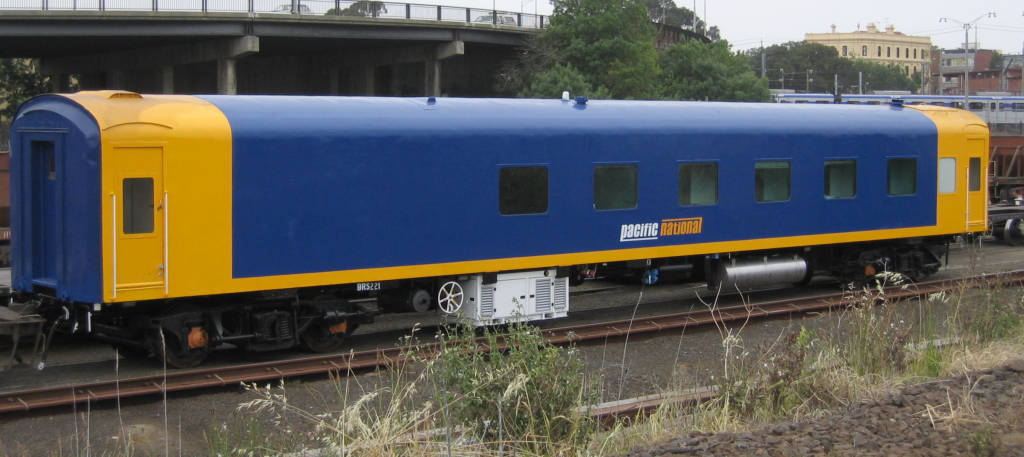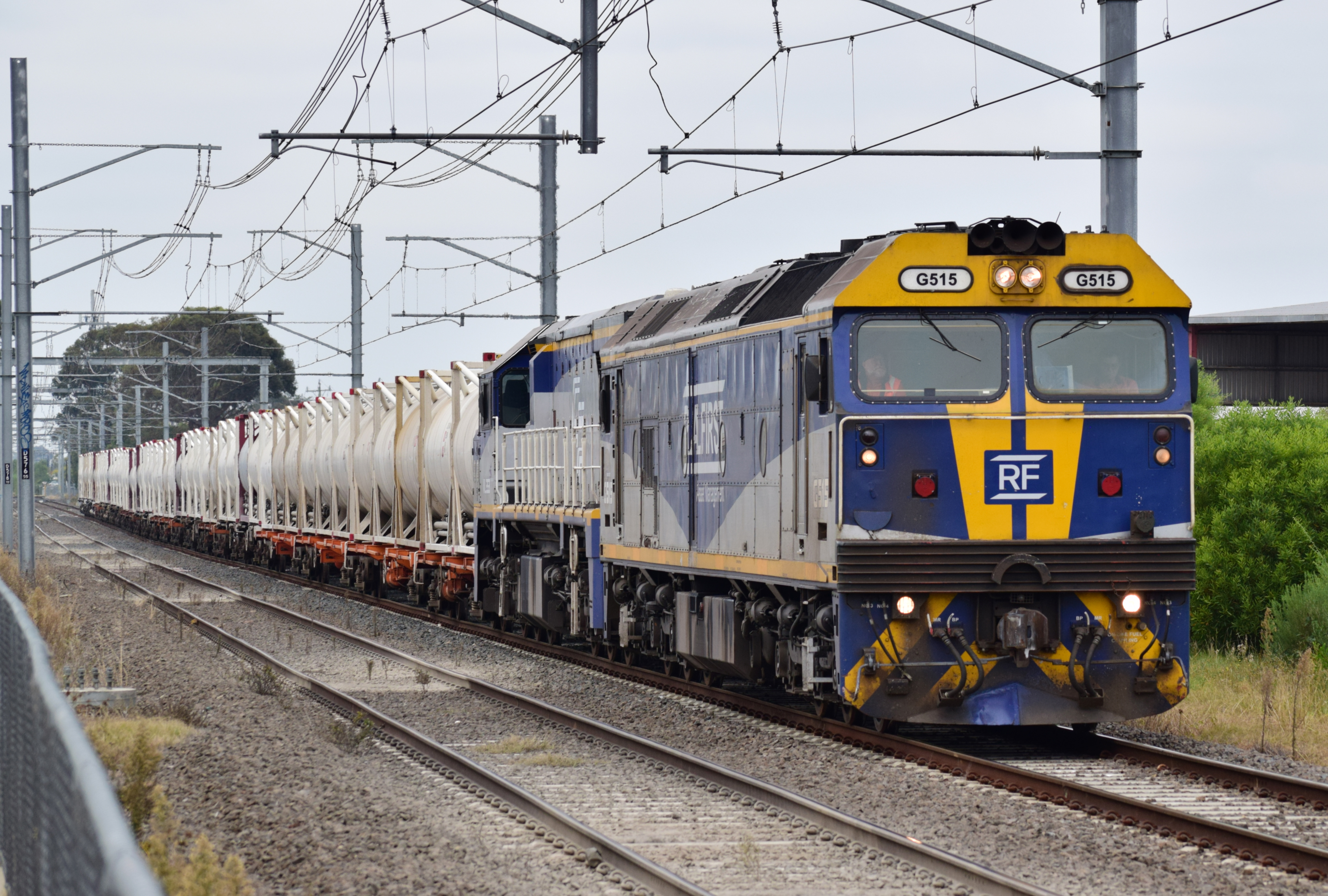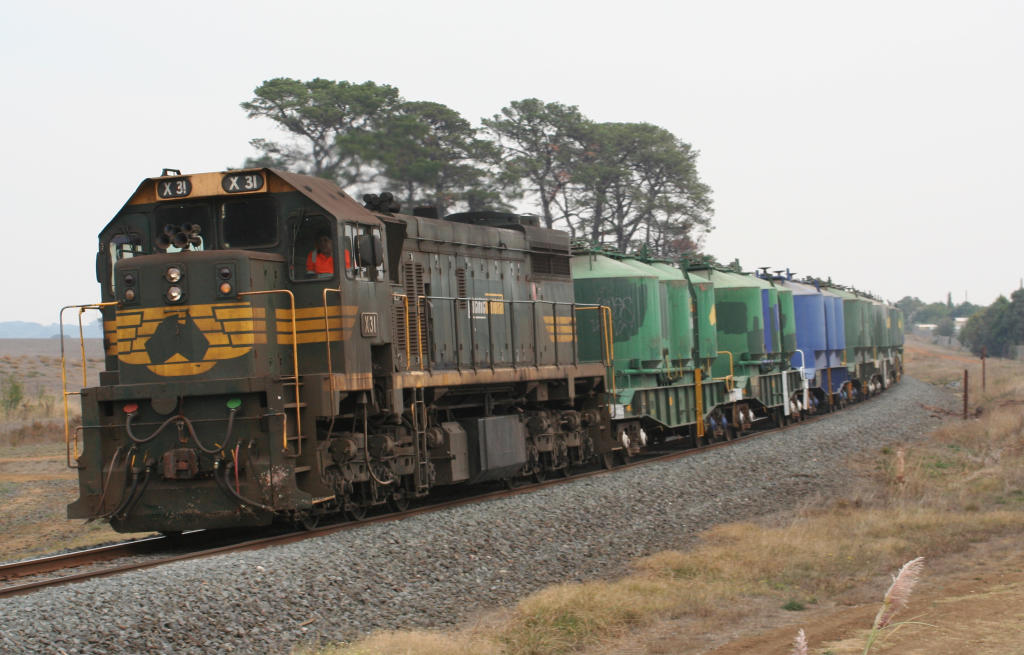|
Intercapital Daylight
The Inter-Capital Daylight was a passenger train that operated between Australia's two largest cities, Sydney and Melbourne from March 1956 until August 1991. History Until April 1962, the line between Sydney and Albury was of a different gauges to that between Albury and Melbourne, requiring passengers to change trains. On 26 March 1956, the New South Wales Government Railways and Victorian Railways introduced connecting daytime services named the ''Sydney–Melbourne (Melbourne–Sydney) Daylight Express''. From Sydney, a three times per week service was introduced, returning from Albury the following day. From Melbourne, a three times per week non-stop service operated in the morning, returning in the evening. From 24 September 1956, both were extended to operate daily Monday to Saturday. Total journey time between the capitals was 13 hours 20 minutes."The Intercapital Daylight" ''Railway Digest'' November 1991 page 396 The New South Wales train consisted of a 42 class lo ... [...More Info...] [...Related Items...] OR: [Wikipedia] [Google] [Baidu] |
New South Wales RUB Type Carriage Stock
The RUB type carriage stock was a type of steel bodied air conditioned passenger carriage operated by the New South Wales Government Railways from September 1949 until April 2000. History In 1943, the New South Wales Government Railways awarded a contract for twenty steel sitting carriages to Waddingtons. These were to be similar to the N type carriages that had been built in 1939 but with the addition of steam heating. Delays in construction & redesign as Air Conditioned Carriages Construction of these cars was shelved while wartime restrictions were in place and when the project resumed in 1945, it was decided the carriages should be air-conditioned and the order increased to fifty. Work had already commenced on the underframes when it was decided to lengthen the carriages from necessitating in the reworking of those already in production. A shortage of steel meant it would not be until 1949 that the first were completed. The initial fifty cars numbered 2240 to 2290 were eve ... [...More Info...] [...Related Items...] OR: [Wikipedia] [Google] [Baidu] |
S Type Carriage
The S type carriages are a corridor-type passenger carriage used on the railways of Victoria, Australia. The first carriages were constructed by the Victorian Railways in 1937 for use on the ''Spirit of Progress'', with additional carriages built for other trains until the mid-1950s. Introduced by Victorian Railways Chairman of Commissioners Harold Clapp for the ''Spirit of Progress'' service between Melbourne and Albury, the carriages lasted through many decades of regular service, with more than one operator. Two major variants of the S-type carriage were constructed: AS first-class cars with 3+3 seating in each compartment, and BS second-class cars with 4+4 seating. A handful of other cars were constructed for various specialist purposes. A number of conversions were carried out in later years, with the addition of beds to some to create sleeping cars, and buffet modules fitted to others to provide on-board catering facilities. The BRS buffet cars were the most recent co ... [...More Info...] [...Related Items...] OR: [Wikipedia] [Google] [Baidu] |
New South Wales XPT
The New South Wales ''XPT'' (short for eXpress Passenger Train) is a class of diesel-powered passenger trains built by Comeng and ABB Transportation. Based on the British Rail designed Intercity 125 High Speed Train, each XPT set is made up of two XP Power Cars in a push-pull formation coupled to between four and seven carriages. The first sets entered service under the State Rail Authority in 1982 and now operate under NSW TrainLink, running on long-distance regional and interstate North Coast, Main Western and Main Southern lines throughout New South Wales and interstate into Victoria and Queensland. History Development Improving public transport was a major issue in the 1976 State Election in New South Wales and one of the commitments of the incoming Wran Government was to buy new rolling stock for country rail services. In January 1978, the Public Transport Commission invited tenders for 25 high-speed railcars similar to the Prospector railcars delivered by C ... [...More Info...] [...Related Items...] OR: [Wikipedia] [Google] [Baidu] |
Motorail
A motorail train or accompanied car train (ACT) is a passenger train on which passengers can take their car or automobile along with them on their journey. Passengers are carried in normal passenger carriages or in sleeping carriages on longer journeys, while the cars are loaded into autoracks, car-carriers, or flatcars that normally form part of the same train. Motorail services are not the same as car shuttle trains or car-carrying train services. The latter usually operate over relatively short distances, on lines passing through a rail tunnel and connecting two places not easily accessible to each other by road. On car shuttle train services, unlike on motorail services, the occupants of the road vehicles being carried on the train usually stay with their vehicle throughout the rail journey. Examples Europe In Europe, many motorail connections are running cross-border between different European countries. To be mentioned are trains between Austria—Germany, Austria� ... [...More Info...] [...Related Items...] OR: [Wikipedia] [Google] [Baidu] |
V/Line G Class
The G Class are a class of diesel locomotive built by Clyde Engineering, Rosewater and Somerton for V/Line between 1984 and 1989. History By the early 1980s, the first generation diesels purchased by the Victorian Railways were nearly 30 years old, with an average fleet age of 20 years. In addition, 70% of the fleet was of 1,000 horsepower or less, a consequence of the historically large number of branch lines in the state. Rationalisation of the rail freight task had also been carried out, with small freight consignments being consolidated to 'freight centres' from 1976. Moves had also been made towards the operation of block trains carrying a single commodity, rather than trains carrying a wider variety of freight. Grain became the major commodity carried by rail in Victoria, with the consulting arm of Canadian National commissioned by VicRail in 1983 to find ways of improving efficiency. Recommendations carried out included increasing train sizes to 50 bogie wagons and ... [...More Info...] [...Related Items...] OR: [Wikipedia] [Google] [Baidu] |
New South Wales 81 Class Locomotive
The 81 class are a class of diesel locomotives built by Clyde Engineering, Kelso, New South Wales, Kelso for the State Rail Authority. History Eighty 81 class locomotives were built by Clyde Engineering, Kelso between September 1982 and February 1986, to replace 1950s vintage New South Wales 42 class locomotive, 42 and New South Wales 44 class locomotive, 44 class locomotives as well as provide additional capacity. The first 42 were based at Broadmeadow Locomotive Depot to operate Hunter Valley Coal Chain, Hunter Valley coal trains, while the remaining 38 were mostly employed on the Main Southern railway line, Main South line between Sydney and Albury railway station, Albury, hauling both passenger and freight trains. The final 15 were equipped with Public Transport Corporation, V/Line radios and, from July 1986, operated through to Melbourne. The 81 class was an evolution of the Australian National AL class, and the V/Line G class and Australian National BL class were, in turn, d ... [...More Info...] [...Related Items...] OR: [Wikipedia] [Google] [Baidu] |
Australian Federated Union Of Locomotive Employees
The Australian Federated Union of Locomotive Employees (AFULE) is an Australian trade union representing railway workers. It was formerly a national union which largely merged into the Australian Rail Tram and Bus Industry Union in 1992; however, the Queensland division continued as a separate union active only in that state. It was first registered in February 1921 as the Australian Federated Union of Locomotive Enginemen, representing an estimated 15,000 locomotive enginemen across Australia. Arthur Drakeford became the union's first federal secretary. The union had applied in September 1920, but had its registration delayed due to a legal dispute with the Federated Engine Drivers and Firemens Association of Australasia. The single national union replaced the Federated Railway Locomotive Enginemens’ Association of Australia, formed in 1899, which had linked state unions in Victoria, New South Wales, South Australia and Queensland without formally coming together as one federa ... [...More Info...] [...Related Items...] OR: [Wikipedia] [Google] [Baidu] |
New South Wales 442 Class Locomotive
The 442 class are a class of diesel locomotives built by AE Goodwin and Comeng, Auburn for the New South Wales Department of Railways between 1970 and 1973. History The 442 class were ordered and operated by the New South Wales Government Railways. They were the second generation of Alco units to be built, and were used on both main freight and passenger service in New South Wales. Since entering private ownership they have operated across Australia. They are identical to the South Australian Railways 700 class. They were nicknamed ''Jumbos'', due to their 1971 delivery coinciding with that of Qantas' first Boeing 747s. Construction The 442 class were built from 1971 to replace the 40 class locomotives dating from 1951, as they could not be economically rebuilt to modern standards. Twenty locomotives were initially ordered from AE Goodwin, the contract stipulating that the 40 class be accepted as a trade in, with some parts from the older units used for the new locomotive ... [...More Info...] [...Related Items...] OR: [Wikipedia] [Google] [Baidu] |
Victorian Railways X Class (diesel)
The X class are a class of mainline diesel locomotives built by Clyde Engineering, Granville and Rosewater for the Victorian Railways between 1966 and 1976. History In preparation for the opening of the standard gauge line between Melbourne and Albury, the Victorian Railways had purchased a further eight S class locomotives, with the last of these entering service in 1961. But from that date traffic had increased, with a 20% increase in train miles being run by the end of the financial year by the middle of 1965, so the fleet was being stretched beyond reasonable capabilities.Newsrail June 2015 (Vol. 43, Issue 6)pp167-175 Standard gauge trains at the time were typically rostered for a single S class locomotive, which could deliver approximately 1,800 hp. When one wasn't available, two T class locomotives (each delivering approximately 950 hp) could be and were used in lieu. This strategy could not, however, be a long-term solution as the T class had been designed ... [...More Info...] [...Related Items...] OR: [Wikipedia] [Google] [Baidu] |
New South Wales 422 Class Locomotive
The 422 class are a class of diesel locomotives built by Clyde Engineering, Granville for the Department of Railways New South Wales in 1969/70. History The 422 class were the first Australian locomotives built with non-streamlined dual cab bodies. Manufactured by Clyde Engineering, Granville, they were introduced into service on the Main South and Illawarra lines where they would spend most of their New South Wales careers hauling passenger and freight services. Among the services they hauled were the ''Canberra Express'', ''Intercapital Daylight'', ''South Coast Daylight Express'', ''Southern Aurora'', ''Spirit of Progress Griffith Express'and ' Sydney/Melbourne Express''. In 1980, 42220 was rebuilt by Clyde Engineering, Rosewater, receiving an AR16 alternator, a new electrical system and ''Super Series'' wheel slip technology. It was a test bed for many of the features incorporated into the 81 class."The 422 class locomotives of NSW" ''Railway Digest'' February 2000 page ... [...More Info...] [...Related Items...] OR: [Wikipedia] [Google] [Baidu] |
Victorian Railways S Class (diesel)
The S class are a class of diesel locomotives built by Clyde Engineering, Granville for the Victorian Railways between 1957 and 1961. History The S class was based on the Electro-Motive Diesel F7 design and were very similar to the GM12 class then being built by Clyde Engineering for the Commonwealth Railways. They were mechanically similar to the 1952 built double ended B class. The first order for 10 locomotives were progressively delivered between August 1957 and February 1958. The first four took the names and numbers of the recently scrapped S class steam locomotives, with all being named after prominent Victorians. An additional eight locomotives were ordered for use on the new North East standard gauge line and delivered between November 1960 and December 1961. The class were initially used on express passenger trains such as the ''Intercapital Daylight'', ''Southern Aurora'', ''Spirit of Progress'' and ''The Overland'', but were also used on fast freights. On the b ... [...More Info...] [...Related Items...] OR: [Wikipedia] [Google] [Baidu] |
New South Wales 44 Class Locomotive
New is an adjective referring to something recently made, discovered, or created. New or NEW may refer to: Music * New, singer of K-pop group The Boyz Albums and EPs * ''New'' (album), by Paul McCartney, 2013 * ''New'' (EP), by Regurgitator, 1995 Songs * "New" (Daya song), 2017 * "New" (Paul McCartney song), 2013 * "New" (No Doubt song), 1999 *"new", by Loona from '' Yves'', 2017 *"The New", by Interpol from ''Turn On the Bright Lights'', 2002 Acronyms * Net economic welfare, a proposed macroeconomic indicator * Net explosive weight, also known as net explosive quantity * Network of enlightened Women, a conservative university women's organization * Next Entertainment World, a South Korean film distribution company Identification codes * Nepal Bhasa language ISO 639 language code * New Century Financial Corporation (NYSE stock abbreviation) * Northeast Wrestling, a professional wrestling promotion in the northeastern United States Transport * New Orleans Lakefront Ai ... [...More Info...] [...Related Items...] OR: [Wikipedia] [Google] [Baidu] |





